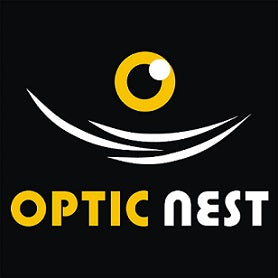"Seamless Sight: Embracing Progressive Lenses for Presbyopia Relief"
Understanding Presbyopia: The Condition and the Benefits of Progressive Lenses
Presbyopia is a common vision condition associated with aging, affecting millions of people worldwide. Typically manifesting in adults over 40, presbyopia makes it difficult to focus on close objects, a challenge that can significantly impact daily activities such as reading, sewing, or using digital devices.

What is Presbyopia?
Presbyopia is caused by a natural hardening of the eye's lens, reducing its flexibility. This flexibility is crucial for changing the lens's shape to focus on objects at various distances, a process known as accommodation. As the lens becomes more rigid, the eye struggles to focus on nearby objects, leading to blurred vision. This condition is a normal part of the aging process, affecting virtually everyone by the age of 50.
Symptoms of Presbyopia
The primary symptoms of presbyopia include:
- The need to hold reading materials at arm's length
- Blurred vision at a normal reading distance
- Eyestrain or headaches after reading or doing close tasks
Identifying these symptoms early can lead to more effective management of the condition.
Progressive Lenses: A Modern Solution for Presbyopia
Progressive lenses are an innovative solution for managing presbyopia. These lenses offer a gradient of optical strength, which varies from the top to the bottom of the lens, providing a smooth transition from distance vision correction at the top to near vision correction at the bottom. Unlike bifocals or trifocals, progressive lenses do not have visible lines, offering a seamless and aesthetically pleasing option for wearers.
Advantages of Progressive Lenses
-
Seamless Vision Correction: Progressive lenses allow for clear vision at all distances—near, intermediate, and far. This is ideal for modern-day demands like using smartphones, reading, and driving.
-
Aesthetic Appeal: With no visible lines, progressive lenses look like regular glasses, which can be more visually appealing and less aging than traditional bifocals or trifocals.
-
Customizable: Progressive lenses can be tailored to fit various frame styles and personal vision needs, making them a versatile choice for many presbyopia sufferers.
Choosing the Right Progressive Lenses
Selecting the right progressive lenses involves considering factors such as lens material, design, and the specific vision needs of the wearer. It is important to consult with an eye care professional who can provide a prescription that maximizes vision clarity and comfort.
Managing Presbyopia with Lifestyle Adjustments
In addition to wearing progressive lenses, making simple lifestyle changes can help manage presbyopia more effectively. Increasing ambient lighting, using high-contrast settings on digital devices, and taking regular breaks from close work can alleviate the symptoms of presbyopia.
Conclusion
While presbyopia is an inevitable part of aging, modern solutions like progressive lenses provide a highly effective way to manage this condition. By enhancing vision across all distances without the need for multiple pairs of glasses, progressive lenses offer a significant improvement in quality of life for those experiencing presbyopia.
With the right approach, both optical solutions and lifestyle adjustments, living with presbyopia can be comfortable and hassle-free. If you're experiencing signs of presbyopia, consulting with an eye care professional is a crucial first step towards clearer vision and better eye health.
